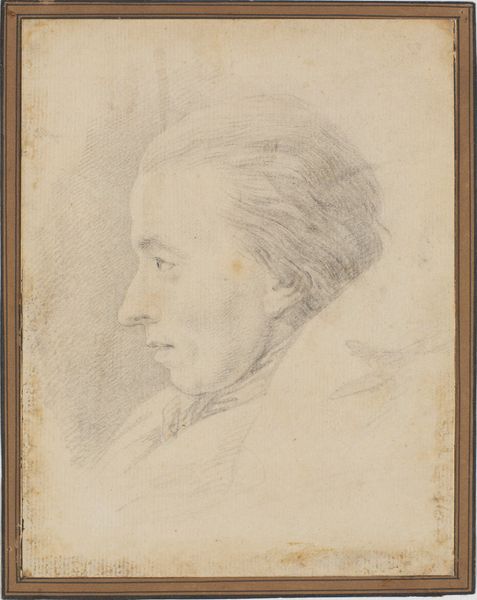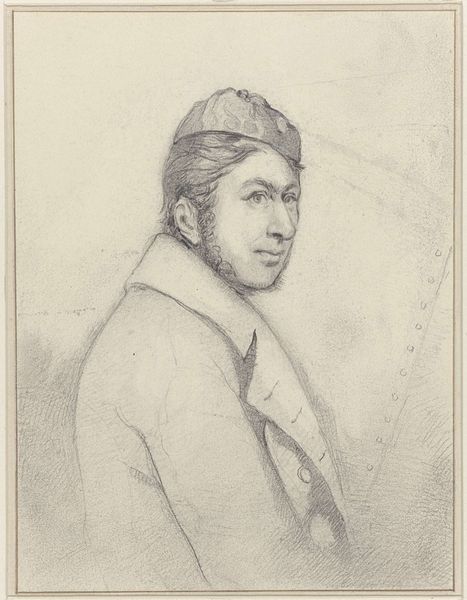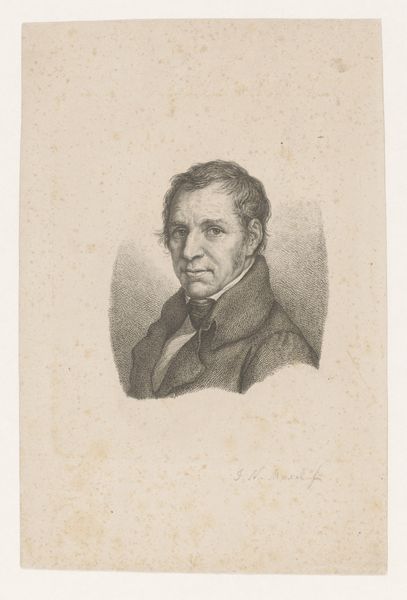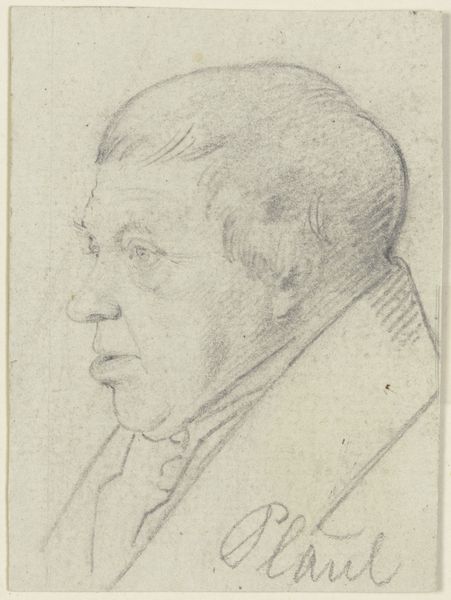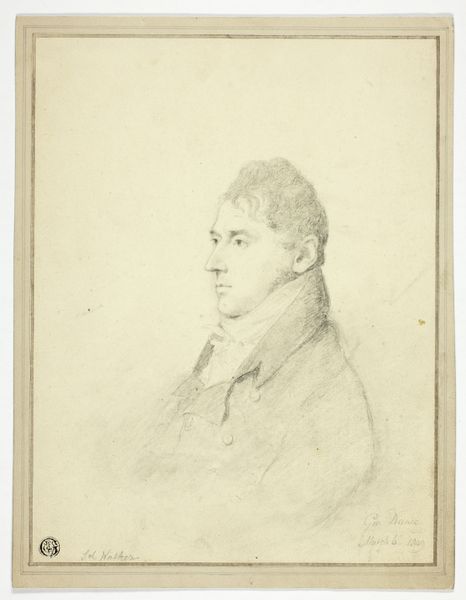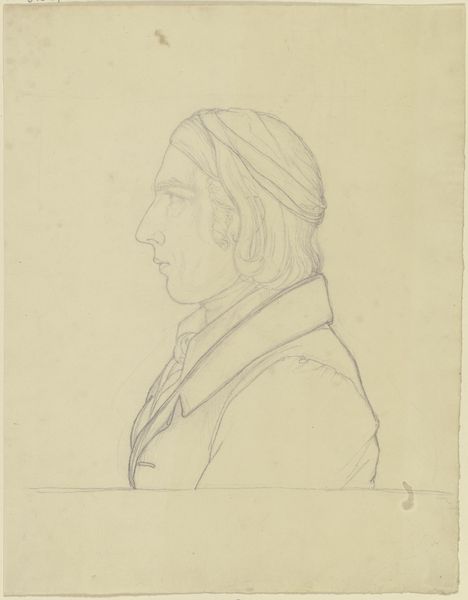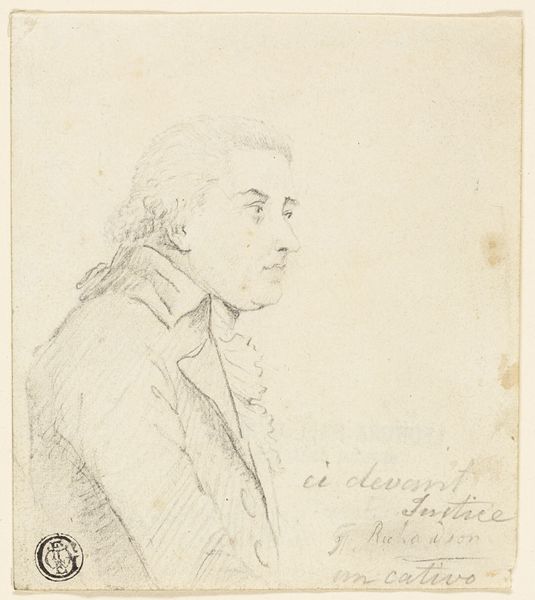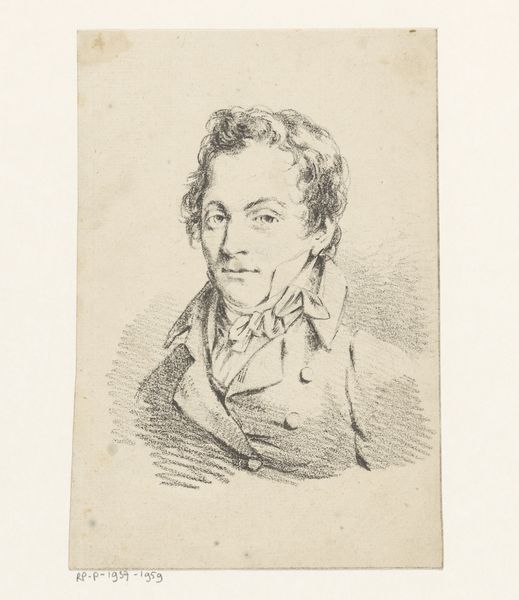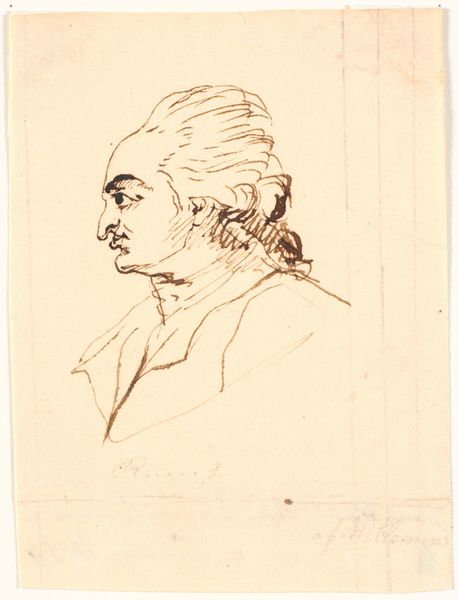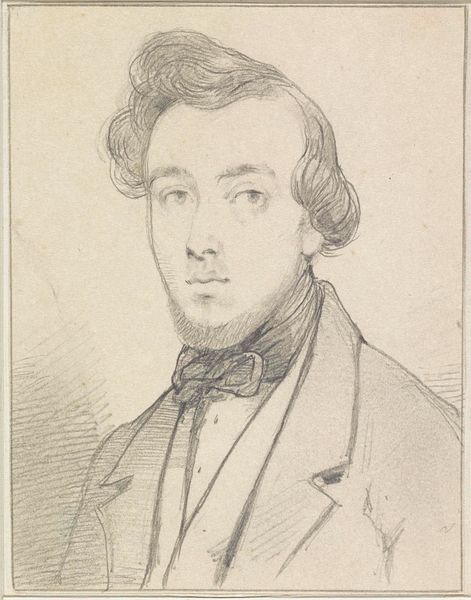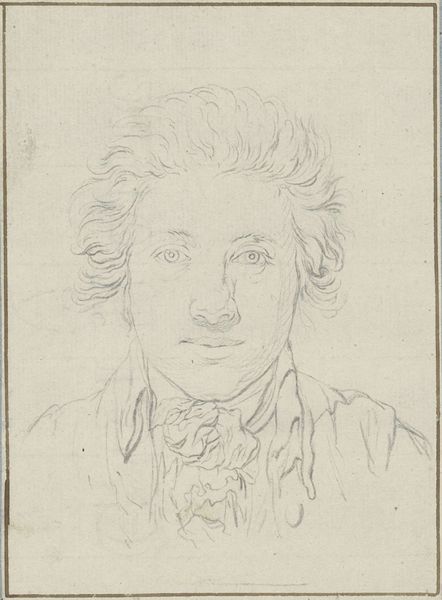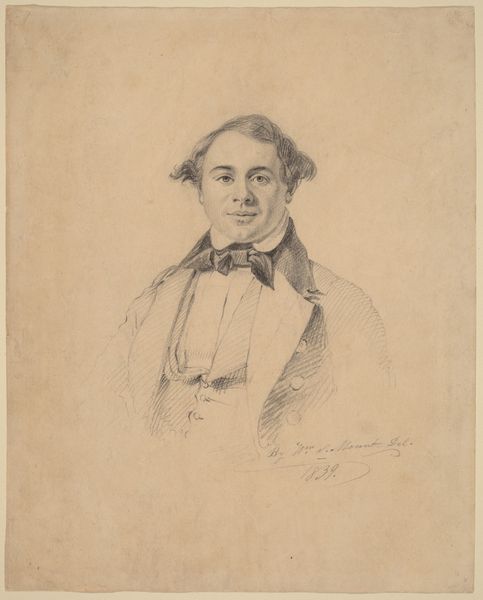
drawing, paper, pencil, chalk
#
portrait
#
drawing
#
neoclacissism
#
figuration
#
paper
#
form
#
portrait reference
#
pencil drawing
#
england
#
pencil
#
chalk
#
line
#
portrait drawing
Dimensions: 482 × 343 mm
Copyright: Public Domain
Editor: So, here we have Thomas Gainsborough's "Portrait Bust of a Man," circa 1780. It's done with pencil and chalk on paper and is currently held at The Art Institute of Chicago. I'm immediately struck by the texture—you can really see the marks of the materials. What does this work bring to mind for you? Curator: For me, it's fascinating to consider this portrait in terms of the specific labor involved. We're seeing the traces of Gainsborough's hand and his deliberate manipulation of pencil and chalk. What kind of social pressures was he subjected to and the class consciousness it promoted? How did this shape the making and consumption of his art? Editor: I see what you mean. So, beyond just seeing a portrait, we should consider how it was produced, the economics around that, and the societal roles that influenced Gainsborough’s process. Is it like looking at the materials and technique tells a bigger story than just the likeness? Curator: Precisely. Gainsborough's choice of materials – humble chalk and pencil – challenges the traditional boundaries of portraiture, usually reserved for oil on canvas for the upper class. Was this made in the purpose of studying? Was it meant to be transferred onto a more elaborated media? I'm curious about who would be commissioning a "pencil portrait." These are material questions about how social distinctions shape artistic practice. Editor: That's really insightful. Thinking about the choices, from the paper itself to the quickness of drawing, I suppose those tell just as much as who the man is supposed to be. Curator: Absolutely. It encourages us to consider how artists both reflect and challenge their social context through the materials they use and the means of production they adopt. It’s not just a depiction of a man; it's a record of material and labor within a specific cultural moment. Editor: Okay, I'm going to have to keep that in mind from now on: artwork as material, artwork as work. Curator: Exactly. Focusing on the material realities behind art, we unearth the embedded stories about the cultural production of the piece, and what were its consequences in history.
Comments
No comments
Be the first to comment and join the conversation on the ultimate creative platform.
